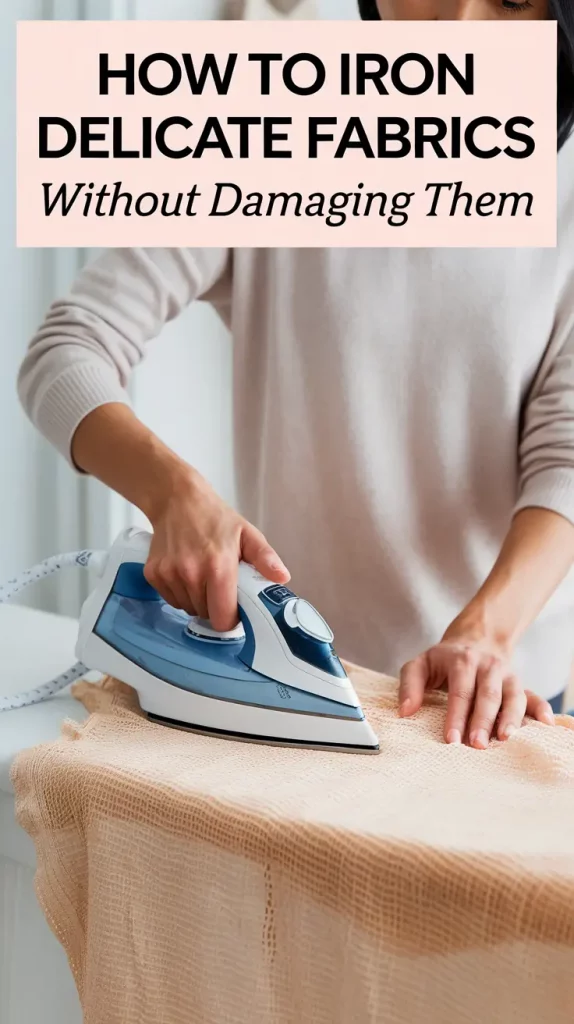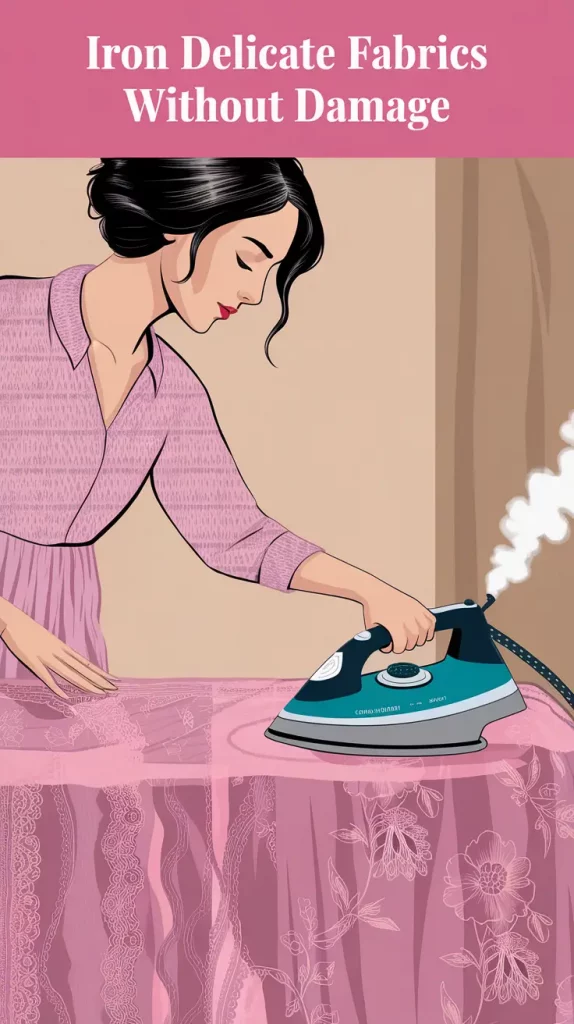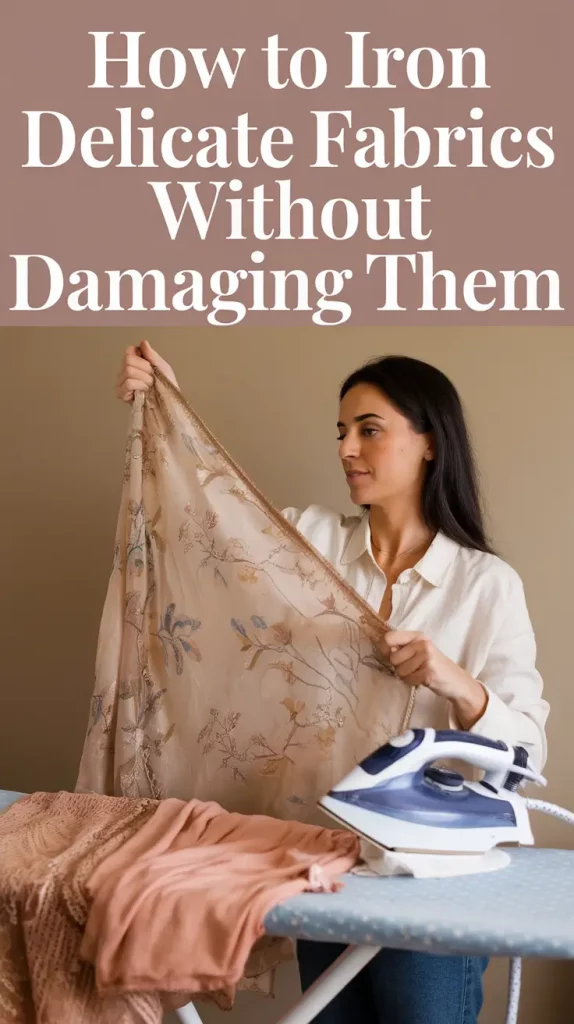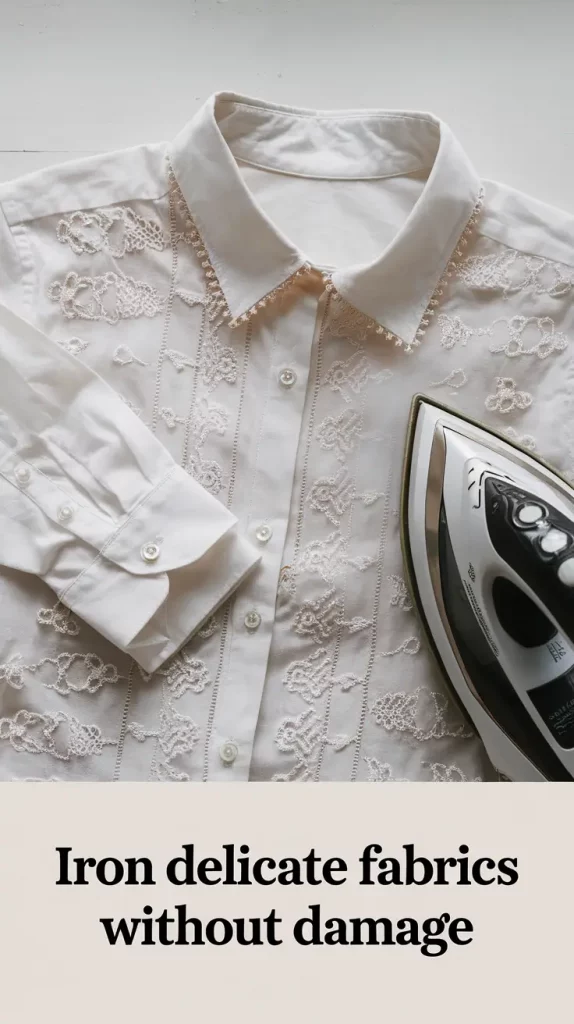How to Iron Delicate Fabrics Without Damage: Safe Techniques and Tools for 2025
The majority of fabric damage that occurs during ironing takes place within the first ten seconds of heat application. The care of delicate fabrics requires special handling because silk shirts and lace dresses need delicate treatment. A growing number of Americans investing in premium clothing and eco-friendly textiles makes fabric care sponsored by safe and effective methods more essential than ever by 2025.
The guide delivers a secure method endorsed by experts which enables users to smooth delicate fabrics without harming them. The guide will explain which equipment to use while teaching proper handling techniques for materials while showing you how to prevent common errors. Our guide provides complete assistance for both vintage silk blouses and linen pants.
This article provides benefits to multiple groups of readers.
- Fashion-conscious individuals who love premium fabrics.
- Parents ironing special occasion outfits.
- Anyone who wants to extend the life of their wardrobe.
The following guide presents safe methods to care for your premium garments.

Why It’s Essential to Iron Delicate Fabrics Correctly
The list of delicate fabrics includes silk, chiffon, lace, linen, organza, satin, tulle and cashmere. These elegant fabrics tend to burn easily while showing shine marks and developing fiber damage and even melting.
The widespread use of high-efficiency irons and vertical steamers in U.S. households makes it essential to learn proper treatment methods for delicate fabrics. The tools deliver strong results yet become dangerous when used improperly.
Using correct irongear techniques safeguards your clothing investment while making your clothes last longer and appear expertly dry-cleaned without professional dryer help.
Preparing for Success: Tools and Setup Matter
Choose the Right Iron or Steamer
Not all irons are made equal. When dealing with sensitive fabrics you should use the following tools:
- Ceramic soleplates: Gentle on fabric and distribute heat evenly.
- Variable steam control: Allows you to adjust moisture.
- Low-temperature precision settings: Essential for silk or lace.
- Vertical steamers: Great for tulle, lace, and chiffon.
Best-in-Class Options (2025)
- Rowenta DW9280 Steam Force: Smart steam control.
- CHI Electronic Retractable Iron: Titanium-infused plate with touch control.
- Conair Turbo ExtremeSteam Handheld Steamer: Lightweight and effective.
Must-Have Accessories
-
- Pressing cloth (100% cotton or muslin)
- Sleeve board or mini-press board
- Distilled water (to avoid mineral stains)
“Ironing delicate fabrics is less about pressure and more about control. Think of it like handling glassware.” — Textile Care Expert, NY Fashion Institute

Step-by-Step: How to Iron Different Delicate Fabrics Safely
Step 1: Read the Label First
Care labels use universal symbols to guide you. Don’t ignore them!
Common U.S. Ironing Symbols:
| Symbol | Meaning |
|---|---|
| ☀ | Iron at low temp |
| ☁ | Steam can be used |
| X over iron | Do not iron |
If the label is missing, use the lowest setting and test on an inside hem.
Step 2: Set the Correct Temperature
| Fabric Type | Temperature | Steam | Extra Tip |
|---|---|---|---|
| Silk | Low | Yes | Use a pressing cloth |
| Chiffon | Cool | No | Iron inside out |
| Lace | Low | Yes | Steam from the wrong side |
| Linen | Medium-Low | Yes | Slightly dampen first |
| Satin | Low | No | Iron in one direction |
| Cashmere | No Iron | Steam | Use a garment steamer only |
Always test steam on a scrap or inner seam before full application.
Step 3: Use a Pressing Cloth
Silks and satins require this barrier to stop fabric shine and burning.
You can use:
- Clean white cotton handkerchiefs
- Pillowcases
- Muslin cloths
Step 4: Iron with Care
- Glide, don’t press.
- Never hold the iron in one spot.
- Use smooth, continuous strokes.
- Always iron the inside of the garment if unsure.

Modern Tools That Make a Difference in 2025
Modern technology has advanced significantly in the field of ironing. Let’s look at top innovations:
Smart Irons
- Philips PerfectCare Elite: Smart heat sensor, automatic shut-off.
- Rowenta Steamforce Pro: Digital display, water filter.
Garment Steamers
- Steamery Cirrus X: Minimalist Swedish design, ideal for travel.
- Jiffy Esteam: Heavy-duty, USA-made reliability.
The equipment decreases errors while making your process more efficient.
Most Common Mistakes (and How to Avoid Them)
We should take measures to stop accidents from occurring. Here are the top 5 issues:
- Skipping the pressing cloth: Causes sheen and scorching.
- Too much steam on chiffon: May distort the shape.
- Wrong temperature: Can permanently damage synthetic blends.
- Using tap water: Can clog steam vents and stain fabric.
- Applying pressure on fragile fabric: Flattens texture or stretches fibers.
Tip: If you see shine marks, dab gently with white vinegar on a cloth.

FAQs From Real People
Can I iron lace with parchment paper?
Not recommended. It doesn’t breathe well and can trap heat. Use muslin or cotton cloth instead.
What if I don’t have a pressing cloth?
Use a 100% cotton pillowcase or a clean kitchen towel as a backup.
How do I remove shine from satin?
Try gently steaming the area from the underside and brushing it lightly with a soft toothbrush.
Is it okay to steam cashmere?
Yes, as long as you keep the steamer 1–2 inches away and use low steam settings.
Ultimate Checklist: Rules for Ironing Delicate Fabrics
| Step | Action | Why It Matters |
|---|---|---|
| 1 | Check the care label | Prevents guesswork |
| 2 | Use the right temperature | Avoids scorching or shrinking |
| 3 | Place a pressing cloth | Protects fabric surface |
| 4 | Move smoothly, never pause | Stops burning or shine marks |
| 5 | Steam from inside out | Preserves outer finish |
| 6 | Store items flat or on padded hangers | Keeps shape and softness |
Conclusion: Gentle Techniques, Long-Lasting Results
Delicate fabrics deserve delicate care. The combination of suitable tools along with some patience and the methods you have learned allows you to safely iron silk, lace, linen and other delicate fabrics at home. Your wardrobe items are now completely safe from damage during this irontreatment process.
Consider your most fragile piece of clothing from your collection. Have steam treatment ever replaced your regular ironing process?
Please add your personal experiences and recommendations as comments and ring in your friends about this guideline if they need assistance.

